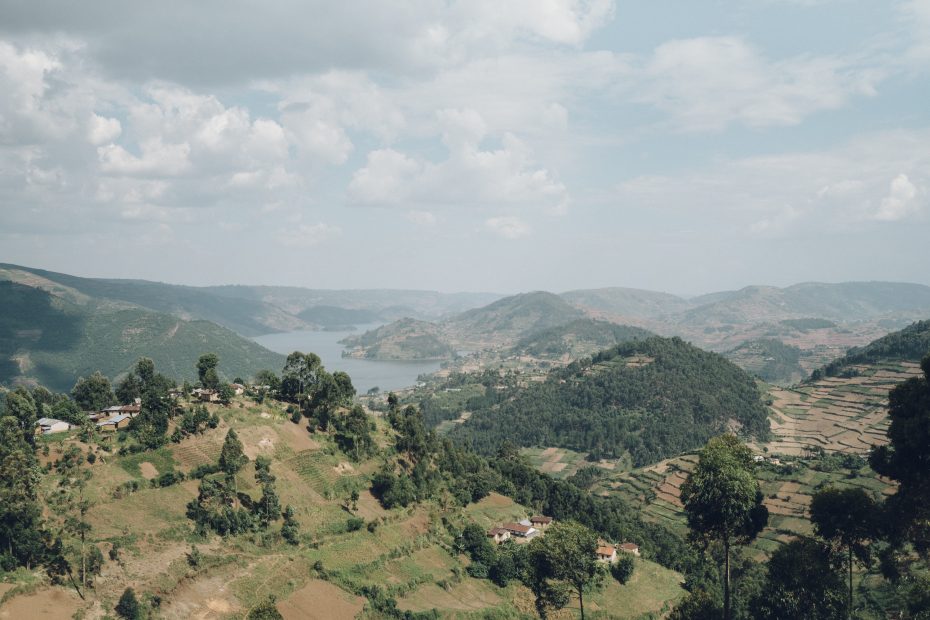” Lake Bunyonyi is located near the gorilla trekking hub of Kabale but often overlooked. The stunning crater lake is surrounded by terraced hillsides and has 29 islands to explore.
Table of Contents
Activities
Visitors can hike around the lake, visit villages, relax at eco-lodges, go canoeing to the islands, or try activities like ziplining. The calm waters also make Lake Bunyonyi a popular swimming spot.
Sights
Highlights include scenic viewpoints over the lake, traditional performances on Habwa Island, and learning about the lake’s history and culture at the Bunyonyi Overlook. The area also has opportunities to interact with locals.
Ssese Islands
Scattered across Lake Victoria, the Ssese Islands receive far fewer tourists than destinations on the mainland. But the archipelago deserves more recognition for its idyllic tropical beaches and fishing culture.
Activities
On the Ssese Islands, visitors can relax on pristine beaches, snorkel and scuba dive in Lake Victoria, observe local fishing villages, and experience the slow island lifestyle. Popular activities include catamaran cruises, sport fishing, quad biking, and birdwatching in the forested interiors.
Sights
Highlights of the Ssese Islands include Banda Island for water sports, Buggala Island for its royal tombs, Bufumira Island for lake views, and Ngamba Island Chimpanzee Sanctuary. Discovering the islands by boat is an adventure.
Kidepo Valley National Park
In Uganda’s distant northeastern corner, few tourists make the long journey to remote Kidepo Valley National Park near the borders with South Sudan and Kenya. The payoff is witnessing the park’s untouched wilderness and wildlife.
Wildlife
Isolated for decades, Kidepo Valley has high biodiversity including 86 mammal species like lions, zebras, giraffes, elephants, and hundreds of bird varieties. Cheetahs can also be spotted on game drives.
Scenery
Dominated by the rugged Kidepo and Narus Valley, the park has dramatic mountain landscapes, hilly grasslands, and rocky outcrops. Hiking the Kananorok Valley or visiting seasonal Narus River are highlights.
Mount Elgon
Though Mount Elgon is one of Uganda’s most iconic natural features, its hiking trails and caldera are often overlooked in favor of climbing the Rwenzori Mountains. The dormant volcano makes for a peaceful trek.
Hiking
With routes ranging from a few hours to multiple days, Mount Elgon National Park offers scenic hiking through bamboo forest to reach viewpoints of the caldera. Guided hikes visit cave paintings and hot springs.
Sights
Highlights include Wagagai Peak for panoramic views, Sipi Falls on the mountain’s slopes, and exploring the enormous caldera, which is one of the world’s largest. Wildlife like elephants and buffaloes can also be spotted.
Lake Mutanda
Nestled beneath the Virunga Mountains near Lake Bunyonyi, Lake Mutanda provides a scenic escape away from Uganda’s busier southern circuit. The area has opportunities for relaxing or adventure.
Activities
Visitors can chill out at lakeside lodges, go on guided nature walks through the hills to spot birds and primates, take dugout canoes to islands, and enjoy local cultural experiences.
Attractions
Highlights include Mutanda Wetland for wildlife viewing, swimming and boating on the lake, and nearby Mahoma Falls for coffee tours at one of Uganda’s largest plantations.
Amabere Ga Nyinamwiru Caves
The unique Amabere Ga Nyinamwiru caves contain a labyrinth of interconnected chambers full of stalactites and stalagmites. While visited less than Uganda’s national parks, the caves make for an offbeat attraction.
What to Expect
Guided tours lead visitors to explore the caves’ three main systems, lit by the reflections of mineral deposits and rock formations. Highlights include the mirrored Heart of Nyinamwiru and a mystical “birth canal.”
History
These caves have spiritual significance for locals, who have used them for prayers and rituals. Accounts also say the caves provided refuge during tribal wars in the early 1900s.
Mount Gahinga and the Virunga Volcanoes
Though overshadowed by their sister volcano Mount Nyiragongo in the DRC, Mount Gahinga and the other Virunga Volcanoes offer great hiking amid unique volcanic scenery.
Hiking
Trails on Mount Gahinga wind through bamboo forests and past wetlands to reach peaks with views of the Virungas. Guided hikes explore the mountains and learn about local customs.
Wildlife
Endangered mountain gorillas sometimes visit Mount Gahinga from the DRC. Other wildlife includes golden monkeys, elephants, and around 300 bird species. Cave bat colonies are also found inside Mount Gahinga.
Conclusion
Beyond Uganda’s most popular destinations are many underrated hidden gems waiting to be explored, from tropical Ssese Islands to the remote northeast Kidepo Valley. Adventurous travelers will be rewarded by escaping the crowds and witnessing Uganda’s remarkable untamed wilderness, rich culture, and extraordinary wildlife. By venturing to these lesser-known spots, visitors gain a deeper understanding of Uganda’s national character.
FAQs
FAQ 1: What is the best way to get around to Uganda’s hidden gems?
The best way to reach many hidden gem spots is hiring a driver or guide, as public transport is limited. Considering destinations’ remote locations, it helps making transport arrangements with local tour operators.
FAQ 2: When is the best time of year to visit Uganda’s hidden gems?
The driest times from December to February and June to August are ideal for parks and wildlife viewing. For experiences focused on culture, community, and activities, times are flexible.
FAQ 3: How easy is it to book places to stay at hidden gem destinations?
Booking ahead via local tour companies, online platforms, or directly with lodges is recommended for the more remote spots to ensure availability. In other hidden gems with increased tourism, booking upon arrival may work too.
FAQ 4: Is it safe to visit Uganda’s lesser-known areas?
Generally, yes. Uganda is considered politically stable and relatively safe in recent times, even in remote regions, but it’s wise being prudent by researching current conditions and utilizing guides.
FAQ 5: What should I pack for visiting Uganda’s hidden gems?
Pack lightweight, quick-dry clothing, hiking boots, binoculars, camera, flashlights, sun protection, mosquito repellent, first-aid supplies, and other outdoor gear to comfortably enjoy these adventures.
